► All EX30s driven in the UK
► Single or Twin Motor, two battery sizes, two trim levels
► Priced from £33,050
While we’ve already driven single and twin motor versions of the compact Volvo EX30 SUV, we hadn’t sampled the entry-level model until now. While the rangiest models get a 64kWh battery pack under the floor, you can save a chunky £4k by sticking with the standard 49kWh pack.
Based on the same Geely underpinnings as the Smart #1 and Zeekr X, but with a distinctive Volvo sheen on top, the EX30 seems almost too good to be true on paper, instantly becoming one of the more affordable e-SUVs in the country.
How does this baby Volvo behave in the UK, and is another 90 miles of range really worth over £4,000? We’ve put in the miles to find out, and if you want to know how we test, we’ve an explainer page for that.
At a glance
Pros: Well-priced, mostly plush inside, punchy acceleration
Cons: All-touchscreen interior, some strange material choices, loose body control and light steering
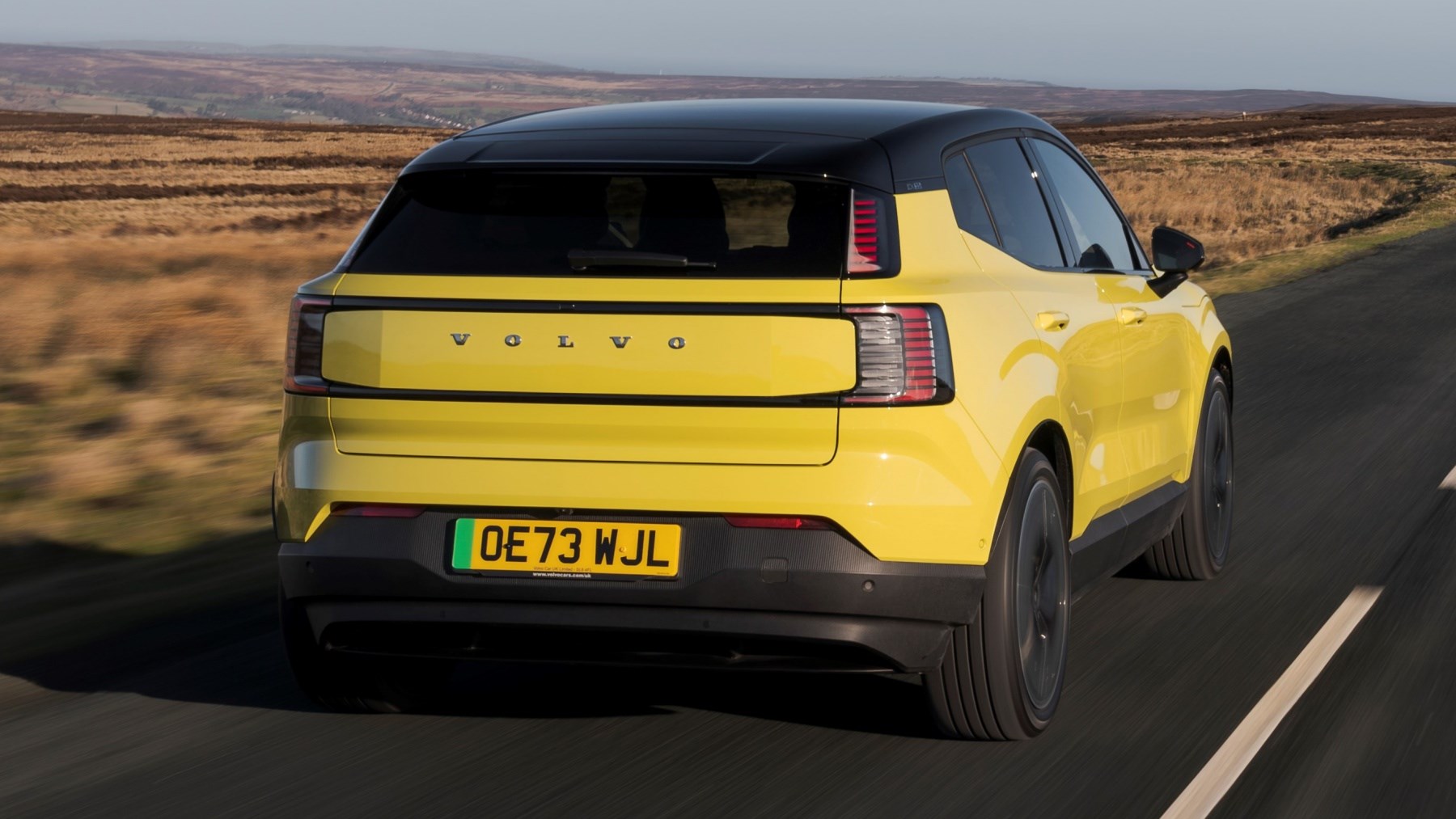
What’s new about the Volvo EX30?
This is Volvo’s first properly purpose-built EV. Arguably that honour was already won by the C40 SUV (now renamed EC40), but that was based on the XC40 platform that was initially designed to accept petrol, diesel and plug-in hybrid engines. The EX30 sits on the smallest version of Geely’s Scalable Experience Architecture, shared with various products from around the group.
This endows it with similar specs to the aforementioned Smart and Zeekr. Single Motor models have 268bhp and 253 lb ft – Twin Motor Performance ups this to 422bhp and 400lb ft. There are two battery sizes available – 49kWh and 64kWh. The former is available in the Single Motor car and provides up to 209 miles of WLTP range, while the latter can be had in either Single Motor Extended Range or Twin Motor Performance flavours. You get 295 miles and 280 miles from these respectively. Those are reasonable ranges but not groundbreaking in terms of efficiency – a larger VW ID.3 will go further per kilowatt-hour.
The small battery charges at a max of 134kW, the big, 153kW – both of these bring a 10-80% charge down under 30 minutes. A full charge from a home wallbox will take around 12 hours for the larger battery.
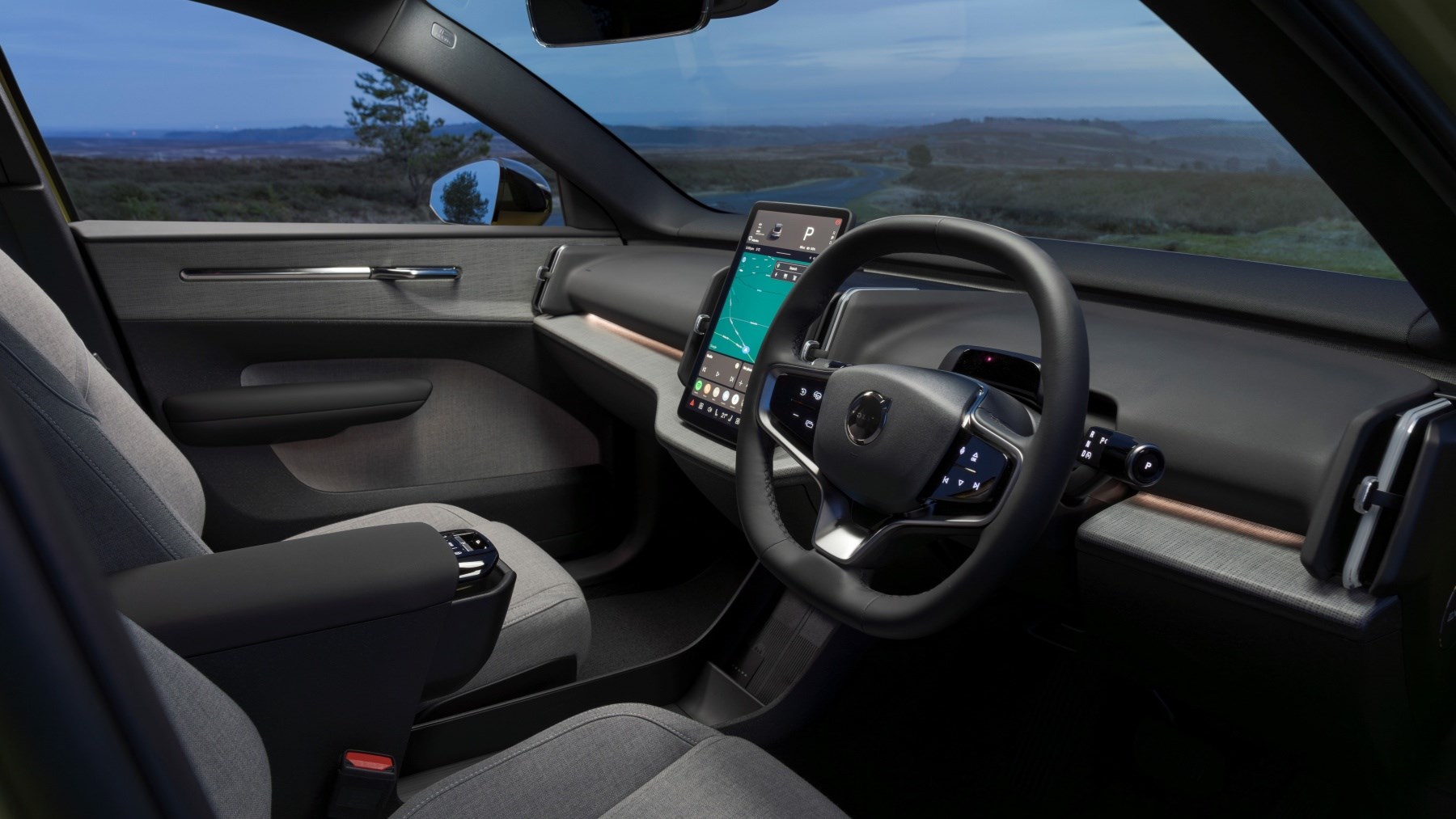
These are all – unsurprisingly – very similar stats to the EX30’s platform mates. Performance figures are obviously quite similar too. Curiously, the Single Motor model will do 0-62mph in 5.7 seconds with the smaller battery or 5.3 with the larger battery, despite power and torque stats being identical between the two. Seems like Volvo’s punishing drivers for being cheapskates. The Twin Motor Performance will do 0-62mph in a frankly daft 3.6 seconds, making it the fastest-accelerating Volvo ever.
The cheapest Single Motor variant is the same price as many more humdrum e-SUVs with far less firepower. The Twin Motor EX30 undercuts a 201bhp VW ID.3 and virtually matches a base-spec Tesla Model 3. In terms of bhp per buck, this is good value, if not quite MG4 XPower levels of insanity.
How does the Volvo EX30 drive?
Performance follows the typical small EV template. Put your foot down in the Single Motor car and you set off swiftly and with minimal drama. It’s quick off the line and has more than enough performance to make motorways and country road overtakes effortless, plus its RWD chassis minimises the aggressive wheel-scrabbling you often get from front-driven rivals such as the Kia Niro EV. The 49kWh car is plenty fast enough, while the 64kWh starts edging into the excessive, even with one motor.
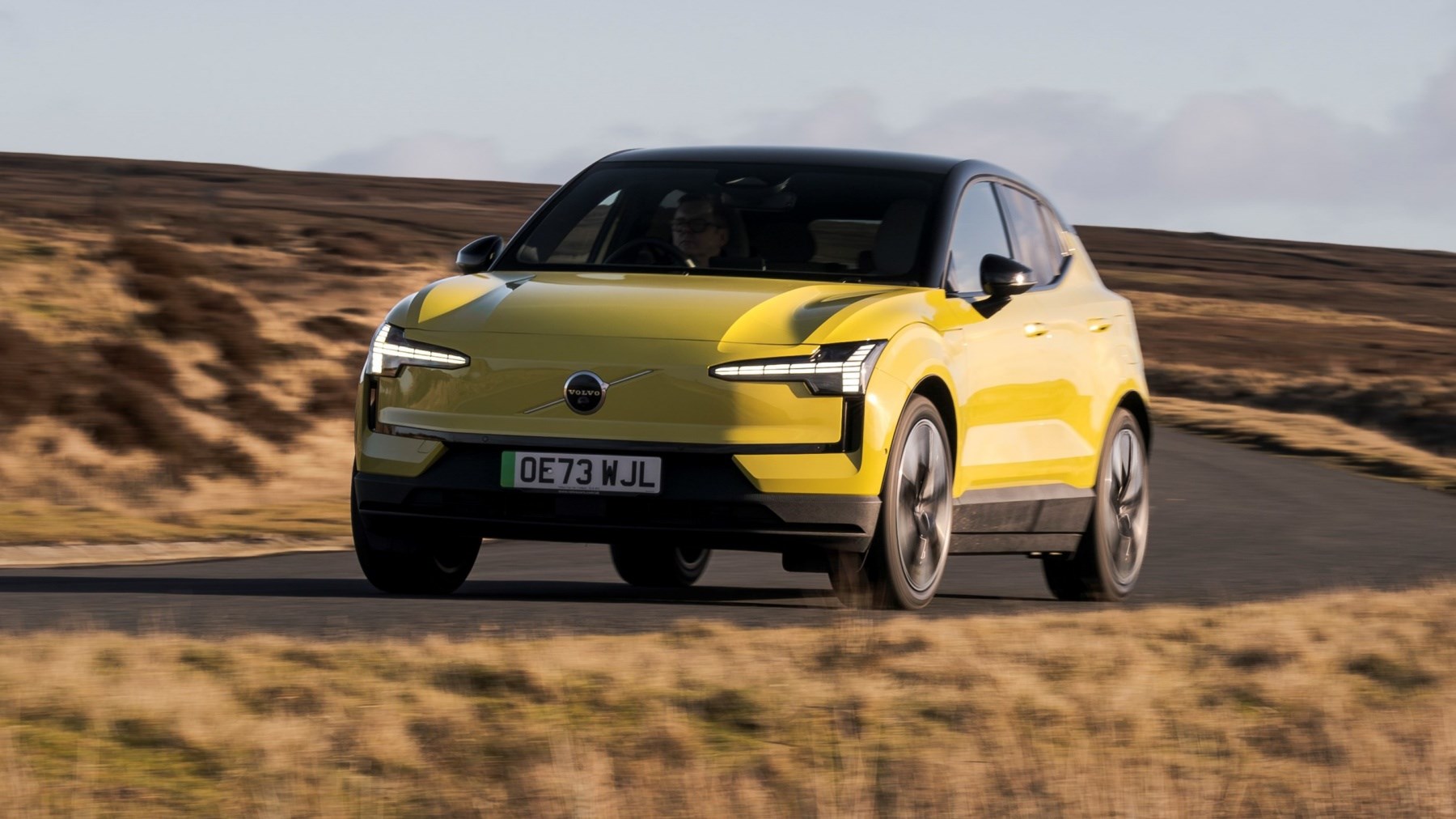
Handling is uninvolving despite being reliant on the ESC to stop the tail twitching on corner exit. An ESC off toggle is present in the touchscreen, but definitely doesn’t kill it completely. That’s probably for the best given the substantial power and short wheelbase. The bigger issue is that the steering is too light and just doesn’t give you a great deal of confidence, while turn in isn’t very enthusiastic.
The EX30 doesn’t roll as much as its Smart #1 platform-mate, but body control still isn’t its strongest suit – and while the damping is far better than the Zeekr X to which it’s also related, it does still feel uncontrolled at times. Head over a speed bump and there’s a pronounced pitching after the fact no matter what motor and battery combo you have. The ride is at its best on the smallest wheels although you can still feel imperfections pass beneath you and a bit of fidget.
The Twin Motor has a curious delay engineered into the throttle by default which actually makes driving it smoothly a little easier than it could otherwise be with 422bhp on tap. To unlock the full hyperactivity of this powertrain you need to tick a virtual box on the touchscreen putting it in ‘Performance’ mode, which gives the usual hair-trigger throttle we’re becoming accustomed to on performance EVs.
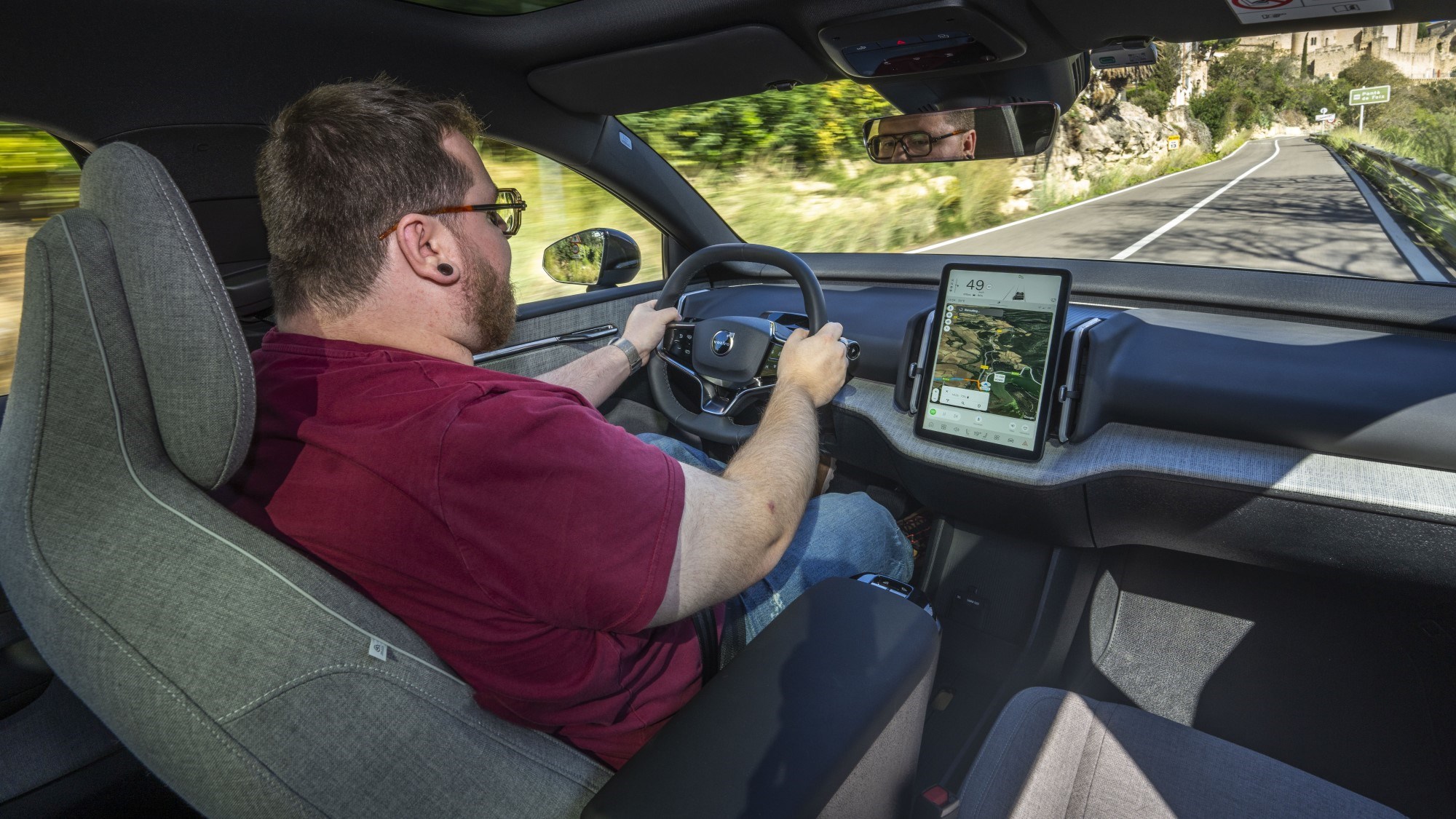
Volvo hasn’t really changed much other than the power output, though, so there’s very little pleasure to be had in pushing this car to its potential. Firmer suspension or a quicker steering rack would have at least given the illusion of a slightly sportier model, although it does have more traction. Even so, a damp roundabout and early throttle application got a big twitch from the tail.
There’s a one-pedal driving mode which we didn’t find nearly strong enough, with minimal deceleration from speed and a very gentle braking effect in town. We’d like to see this dialled up to make city slicking a true one-pedal affair. Range is predictably way worse in the real world, making the 64kWh battery a tempting choice. Our standard range test car wouldn’t even hit 150 miles on a mix of A roads, dual carriageways and motorways. The bigger battery version should easily top 200.
What about the interior?
It’s quite nice, though some aspects are decidedly un-Volvo. First, the good. It’s light, airy and spacious in here for the front seat passengers, with Volvo’s Scandi-minimalist vibe translating over well. Material choices are interesting and largely do away with swathes of piano black plastic, plus there are numerous nice touches. Volvo’s used plenty of recycled materials in here, with carpet made from 100% recycled PET bottles and floor mats made from fishing nets. The metal door handles also look and feel terrific.
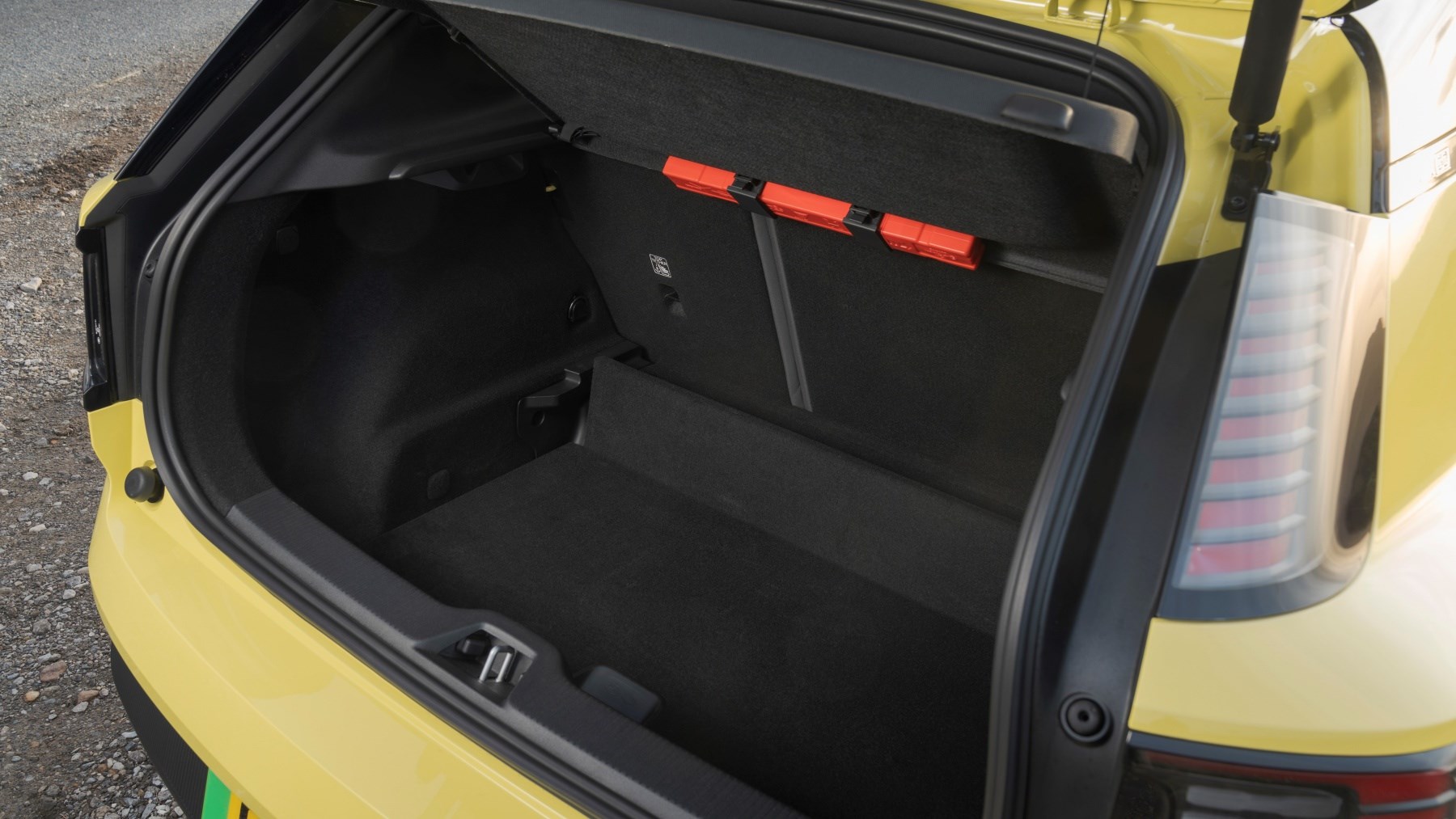
We adore the loading dimensions diagram on the tailgate, helping you know if that IKEA haul will fit before you have to embarrassingly unload it back onto the trolley. It’s a small SUV, though, so you’ll have to accept the limitations of a 318-litre boot and limited rear seat space for adults.
In terms of layout, you get a clean and uncluttered dash and door panel. Volvo’s relocated the door speakers to a Harman Kardon soundbar running the width of the windscreen, which offers acceptably good sound – though audiophiles won’t be blown away.
There are four distinct ambiances depending on your trim level. ‘Indigo’ is a pleasing dark blue and uses recycled denim fibres for the trim finisher across the dash. ‘Breeze’ pairs baby blue seats with an unusual speckled trim that reminds us of the spray-on floor in a school toilet.
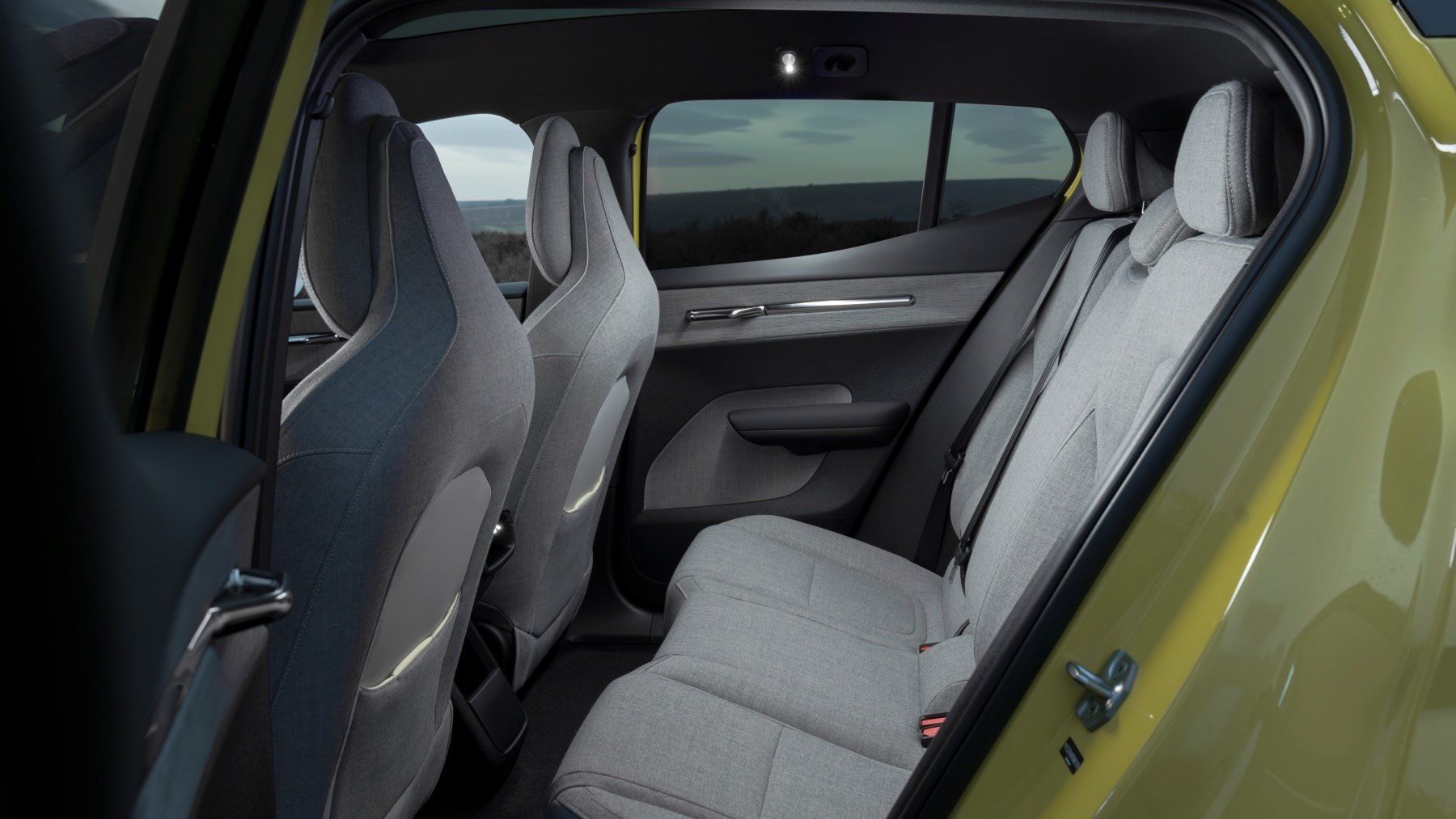
‘Moss’ and ‘Mist’ both use an interesting flax texture across the dash, which doesn’t feel as though it’ll age particularly well given the frayed edges on our test models. High points include the truly lovely wool blend seats of the Mist trim, as well as welcome flashes of colour at the bottom of cupholders and storage cubbies. We applaud Volvo for not just making the EX30 another monochromatic box.
What’s harder to applaud is the almost total lack of physical controls. Everything is controlled by the central touchscreen, from the HVAC to the glovebox opening. You don’t get a gauge cluster, either – the top fifth of the screen is reserved for your instrumentation. Mirrors? On the touchscreen. Wiper sensitivity? Touchscreen. Adjusting settings as simple as the temperature is particularly annoying on the move, especially those further up the screen where you don’t even have anywhere to rest your hand.
For a brand so laser-focused on safety as Volvo it’s disappointing that it’s giving into this particular trend. Even engineers, when pressed, admitted that ‘there are arguments that this way is less safe’ than simply having a degree of physical switchgear and a real gauge cluster. Even if you like a bit of tech, some of the decisions are mind-boggling. Not only do you turn the headlights on in the screen, you have to confirm you want them on by pressing the steering wheel. Madness.
 Volvo EX30 driving position
Volvo EX30 driving position
It’s not completely terrible, obviously. The Google operating system means you get perhaps the best sat-nav system baked-in, plus apps such as Spotify for music playback. The safety functions – including the ever-annoying driver attention monitor – are only a couple of menus deep, making it pretty easy to turn them off at the start of every drive. And it’s very clear and responsive, set at a good distance from the driver and not so high that it’ll block any of the road ahead. It’s the concept we object to here, rather than the execution.
Volvo EX30: verdict
There’s a lot to like about the EX30, but too much focus on minimalism/profit margins and some poor tuning make it harder to recommend, especially now its relatively low starting price isn’t the USP it once was.
We certainly appreciate the punchy performance and an interior ambience that works despite some curious material choices. However, the chassis tuning feels unfinished with the EX30’s ride feeling underdamped, its steering too light and chassis relying on electronics to keep control, and then there’s the screen.
Even basic functions like turning the headlights on is far harder than it should be, and while it gets Apple CarPlay there’s no Android Auto. It also needs something to put speed and other information more in front of the driver, leaving this a distracting car to drive. Not what you want from supposedly safe Volvo.